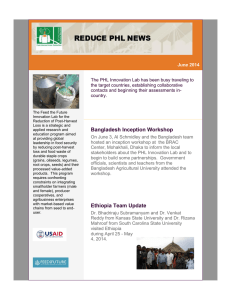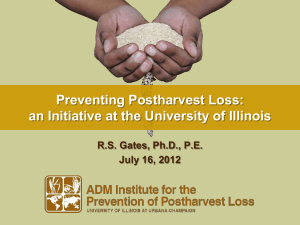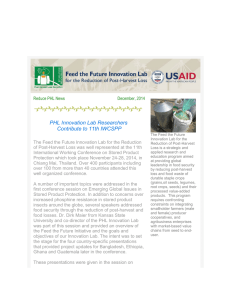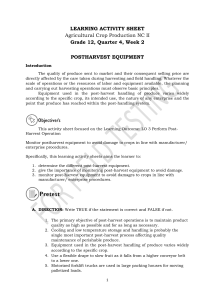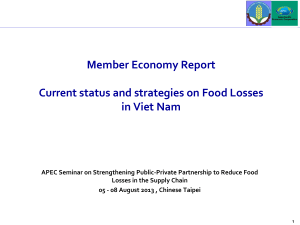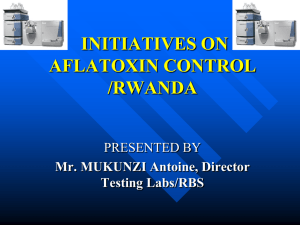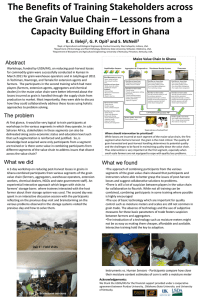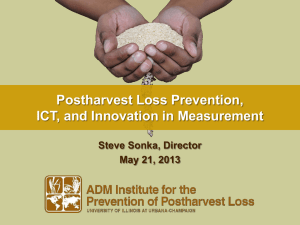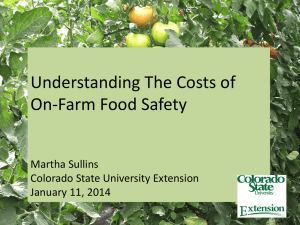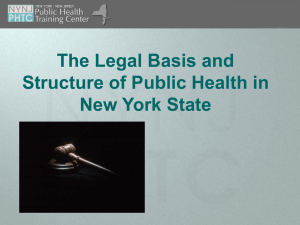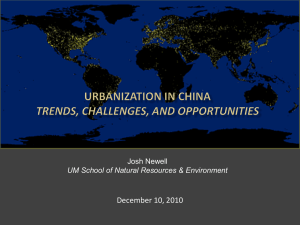Reducing Post-harvest Loss to Advance Food Security
advertisement
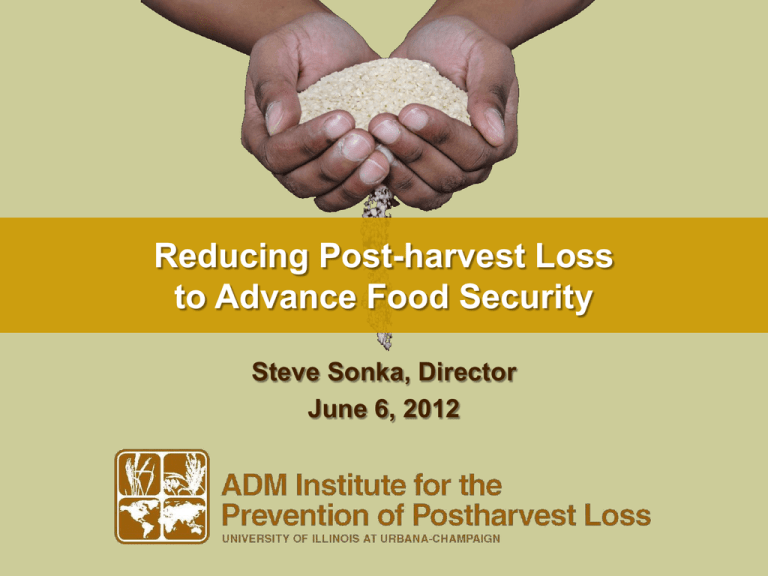
Reducing Post-harvest Loss to Advance Food Security Steve Sonka, Director June 6, 2012 AGENDA • Future food security challenges • Several “views” of post-harvest loss • Post-harvest loss from an economic decision lens • The ADM Institute and its contributions Global Food Demand Is Predicted to Increase 70% by 2050 (FAO; 2009) Per capita food consumption 3500 kcal/capita/day 3000 2500 2000 1500 1000 500 0 World 1964/66 Industrialized Developing countries countries 1964/66-1997/99 Growth 1997/99-2030 Growth Dietary changes in developing countries 2030 Food Demands Require About 200 Million More Hectares (McKinsey; 2011) McKinsey Global Price Institute’s Resource Revolution Commodity Changes Tell Interesting Story (McKinsey; 2011) AGENDA • Future food security challenges X • Several “views” of post-harvest loss • Post-harvest loss from an economic decision lens • The ADM Institute and its contributions PHL Varies by Region (FAO; 2011) DATA! Per capita food waste and food loss (Kg/year) Kg per year PHL Varies by Commodity (FAO; 2011) Post-harvest loss estimates in South & Southeast Asia 70% 66% 60% 49% 50% consumption 40% distribution 30% processing and packaging 30% 22% postharvest handling and storage 20% agricultural production 10% 0% Cereals Roots & Tubers Oilseeds & Pulses Fruit & Vegetables PHL Varies Across Growing Conditions (IBRD/WB; 2011) Generalized loss profiles for major grains in Eastern and Southern Africa 30.0% 25.0% 24.2% market storage 20.0% 16.8% 18.2% 16.9% 14.6% 15.0% transport to market storage transport to store 10.0% winnowing shelling/threshing 5.0% drying harvesting/field drying 0.0% hot/humid maize small warm maize large arid/desert sorghum small arid/desert millet small hot/humid rice small PHL Varies Between Countries: For Same Crop (FAO; 2002) Rice: Total post-harvest losses 6% 5.46% 4.78% 5% 3.74% 4% 3.47% 3.16% 3% 2.74% Asia China 2% 1.31% 1% 1% 0.85% 0.99% 0% harvesting threshing drying storage milling PHL Varies Between States Within One Country (ADM Institute; 2012) Estimated post-harvest loss of black gram in India 30% 25.28% 25% 22.68% 20% grading & repacking transport storage 15% threshing drying 10% harvesting 5% 0% Maharashtra Madhya Pradesh A More Specific Perspective: Rice in SE Asia (IRRI; 2011) In SE Asia, physical losses range from 15-25%. Crop Consumption Quality losses range from 10-30% (loss in value) Reducing PHL and Increasing Yields Have High Potential (McKinsey; 2011) Little Attention Is Devoted to PHL and Yields (McKinsey; 2011) Why Reduce Post-harvest Loss? Some Hypotheses • Estimates suggest 1/3 of agricultural production is “wasted” and doesn’t reach food consumer • Investment required to reduce PHL could be modest • Technology advances should make reduction more feasible and less expensive • Arable land, water, energy are in limited supply – reducing PHL can lessen pressure on scarce resources AGENDA • Future food security challenges X • Several “views” of post-harvest loss X • Post-harvest loss from an economic decision lens • The ADM Institute and its contributions Investable Framework for Reduction of Post-harvest Loss Cost of Reduction Value $s S S1 D1 D Benefits of Reduction (Quantity & Quality) Current Setting 50 % Reduction 100 % Reduction Reduced Loss (%) AGENDA • Future food security challenges X • Several “views” of post-harvest loss X • Post-harvest loss from an economic decision lens • The ADM Institute and its contributions X Timeline of the ADM Institute Fall, 2010 Jan 19, 2011 Initial conversations Official announcement & celebration $10 Million gift India/Brazil emphasis Staple crops Feb, 2011 Seed research efforts initiated $0.4 million in funding allocated Mar /Jul, 2011 Visioning processes Fall, 2011 RFP issued $2.1 million in funding allocated Throughout 2011 – Prospecting for collaborating entities The ADM Institute for the Prevention of Postharvest Loss Vision Statement Key elements include: • To be an international information and technology hub • To encompass technologies, practices and systems • To focus on staple crops in key agricultural domains Research Themes Measurement & technology development Systems informatics & analysis Policy analysis Education, training, & information transfer Our Aspirational Contributions Measurement of loss Challenge Investable Quantum jump implementation technology framework ssonka@illinois.edu http://postharvestinstitute.illinois.edu/
